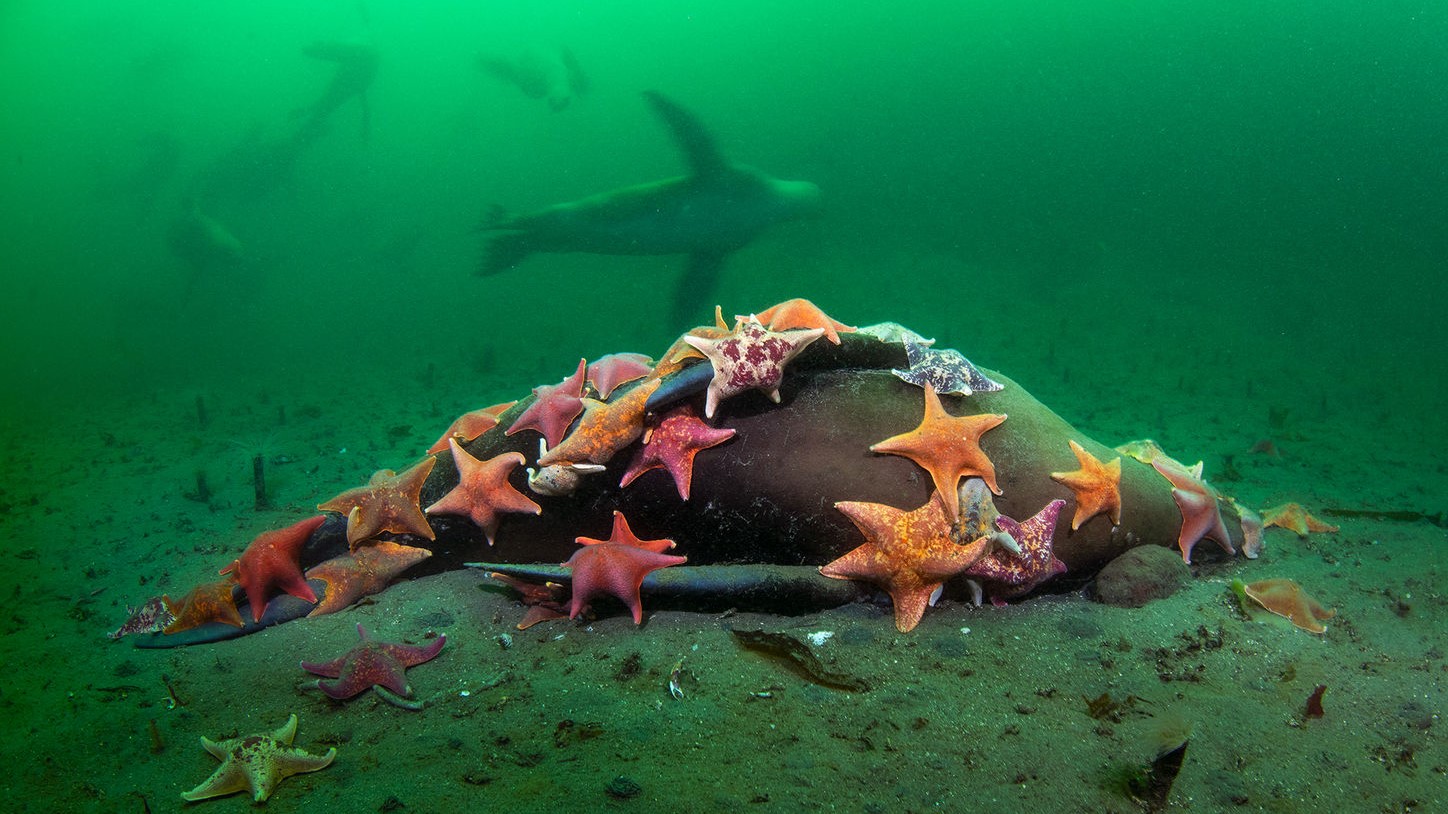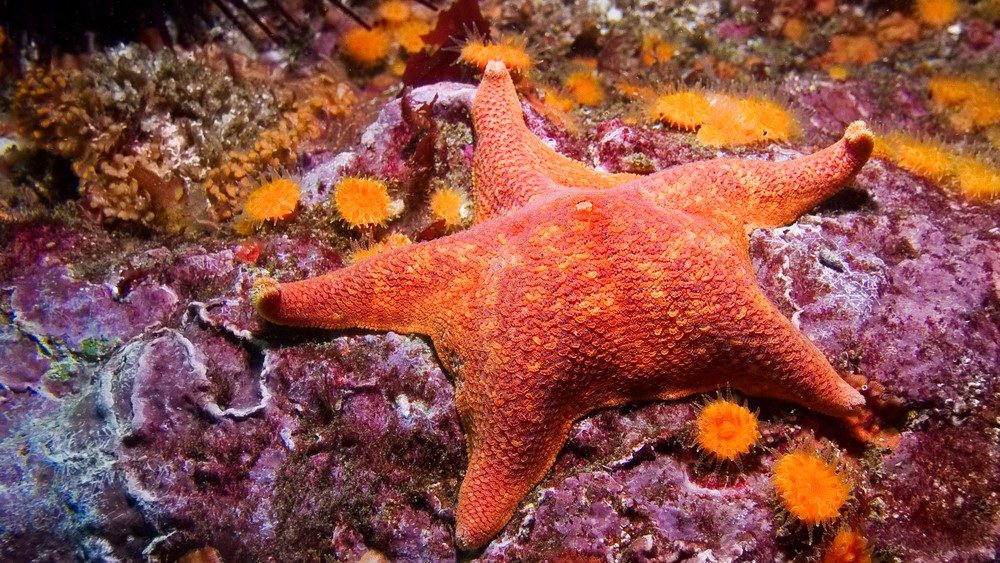Swarm of rainbow-colored starfish devour sea lion corpse on seafloor
The award-winning photo highlights a key stage of the marine food web.

An award-winning photographer has captured the somber moment when dozens of colorful starfish set about devouring a lifeless sea lion on the seafloor in California.
Wildlife photographer David Slater captured the haunting photo in the shallow waters of Monterey Bay. The dead sea lion and its compatriots swimming in the background are most likely California sea lions (Zalophus californianus), but they could also be Steller sea lions (Eumetopias jubatus), based on the two species' geographical ranges. The sea stars are all bat stars (Patiria miniata), scavenging starfish that come in a wide range of colors. The bat stars play a key role in recycling the sea lion into energy and nutrients, returning its remains to the marine food web.
The eerie image recently won first place in the "Aquatic Life" category at the California Academy of Science's Big Picture Competition. "I knew this image was special when I first published it but words cannot even describe how I feel taking first place in such a prestigious contest," Slater wrote on Instagram. The image shows that "beauty and adventure can be found in unexpected places," he added.
Related: No one knows why decapitated sea lions keep turning up in Vancouver Island
It is unclear how the sea lion in the image died. It may have died from natural causes or been killed by anthropogenic factors, such as a vessel strike, plastic ingestion or entanglement in fishing gear. However, California sea lion populations are actually sharply increasing in size and are listed as "least concern" on the International Union for Conservation Nature (IUCN) Red List of Threatened Species.
Bat stars get their name from the webbing that grows between their arms, which resembles a bat's wings. The starfish typically have five arms but can have as many as nine, and the animals grow to be up to 8 inches (20 centimeters) across, according to Monterey Bay Aquarium. They have been documented in a range of colors but are most commonly red, orange, yellow, brown, green or purple.
Bat stars have light-sensing "eye-spots" at the end of each arm, and olfactory cells on the bottom of their arms enable them to "taste" chemicals left by small invertebrates or corpses in the water. When bat stars find food they push out one of their two stomachs through their mouths and release digestive enzymes to break down their meal before ingesting it, according to Monterey Bay Aquarium.
Sign up for the Live Science daily newsletter now
Get the world’s most fascinating discoveries delivered straight to your inbox.

These starfish also have tiny, symbiotic worms that live in the grooves on the underside of the stars' bodies and feed on scraps left behind by their hosts. A single bat star can support up to 20 of these worms, so there may be more than 100 worms in the new image that are busily digesting bits of sea lion.
As scavengers, the bat stars and their hitchhiking worms play an important role in this ocean ecosystem by recycling nutrients and energy from the top of the food chain back to the bottom.
"While this scene appears melancholic, rest assured the sea lion is giving back to the community with which it once swam," competition organizers wrote on the Big Picture website. "When the bat stars have had their fill, any number of creatures big and small will [also] be able to derive energy and shelter from what’s left behind for years to come."
However, bat stars may be under threat due to climate change. Rising ocean temperatures have helped to spread a new disease known as sea star wasting syndrome, which first emerged in Alaska in 2013. The disease is believed to be caused by a bacterium and leads to abnormally twisted arms, white lesions, deflation of arms and body, arm loss and body disintegration, which is almost always fatal, according to the National Park Service. Bat stars are one of the species known to be at risk from this disease, according to Monterey Bay Aquarium.
Originally published on Live Science.

Harry is a U.K.-based senior staff writer at Live Science. He studied marine biology at the University of Exeter before training to become a journalist. He covers a wide range of topics including space exploration, planetary science, space weather, climate change, animal behavior and paleontology. His recent work on the solar maximum won "best space submission" at the 2024 Aerospace Media Awards and was shortlisted in the "top scoop" category at the NCTJ Awards for Excellence in 2023. He also writes Live Science's weekly Earth from space series.










